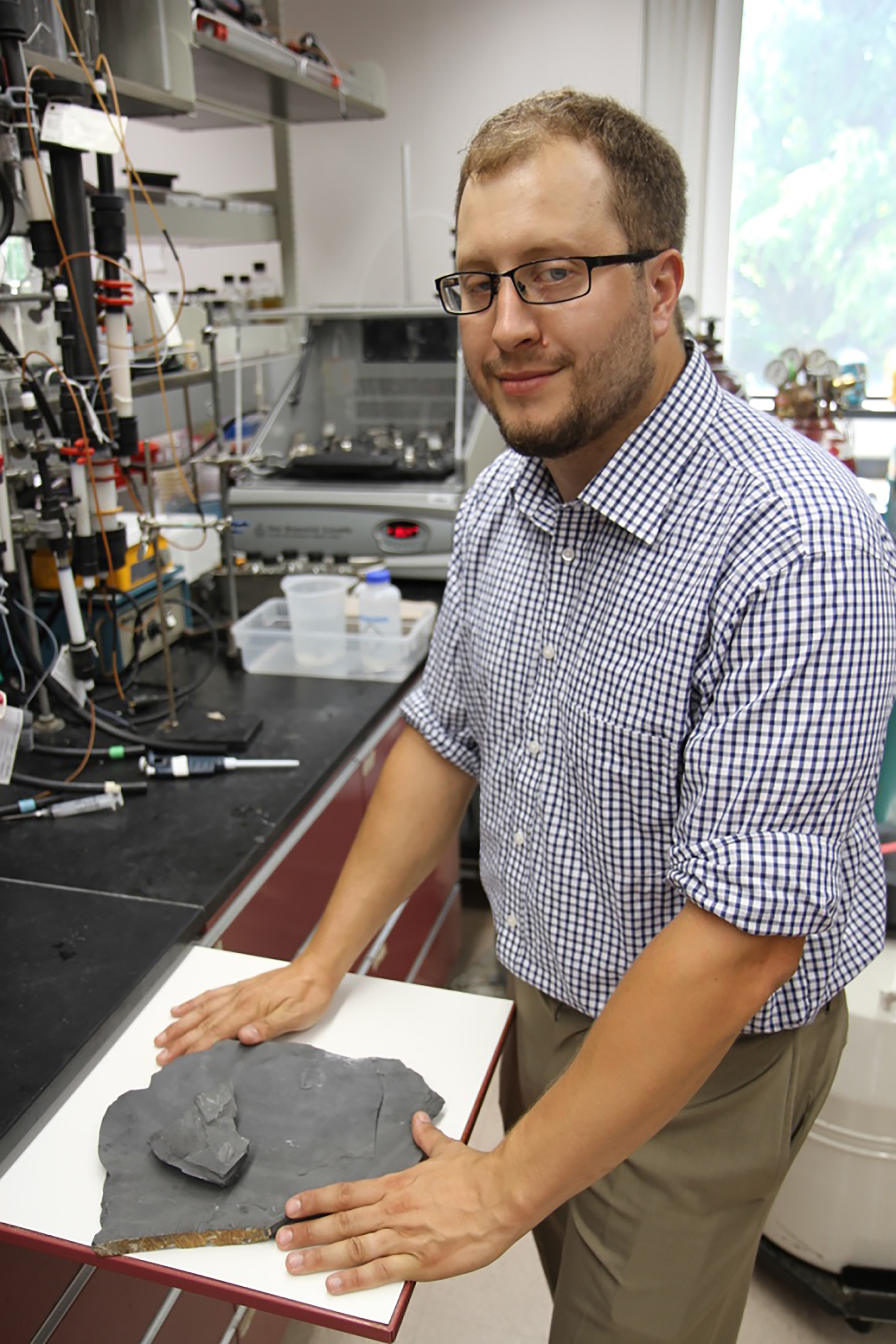Animals took first breaths after small oxygen blip in atmosphere, geoscientist discovers

If oxygen was a driver of the early evolution of animals, only a slight bump in oxygen levels facilitated it, according to a multi-institutional research team that includes a Virginia Tech geoscientist.
The discovery, published this week in the journal Nature, calls into question the long-held theory that a dramatic change in oxygen levels might have been responsible for the appearance of complicated life-forms such as whales, sharks, and squids evolving from less-complicated life forms such as microorganisms, algae, and sponges.
The researchers discovered oxygen levels rose in the water and atmosphere, but at lower levels than was thought necessary to trigger life changes.
"We suggest that about 635 million to 542 million years ago, the Earth passed some low, but critical, threshold in oxygenation for animals," said Benjamin Gill, an assistant professor of geoscience in the College of Science. "That threshold was in the range of a 10 to 40 percent increase, and was the second time in Earth’s history that oxygen levels significantly rose."
The scientists estimated oxygen levels by analyzing iron found in shale rock, which was once mud on ancient seafloors. The location and amounts of iron in the rock gave important clues about ancient ocean water chemistries over time.
Rock data from across the world were collected by the research team, analyzed, compiled, and statistically modeled.
Many organisms on Earth, including animals, need oxygen to produce energy and perform other life functions.
"Going forward we will need much more precise constraints on the magnitude of oxygenation and the physiological requirements of early animals to continue testing the impact of oxygenation on Cambrian animal life," said Erik Sperling, an assistant professor of geological and environmental sciences at Stanford University, and first author on the paper.




